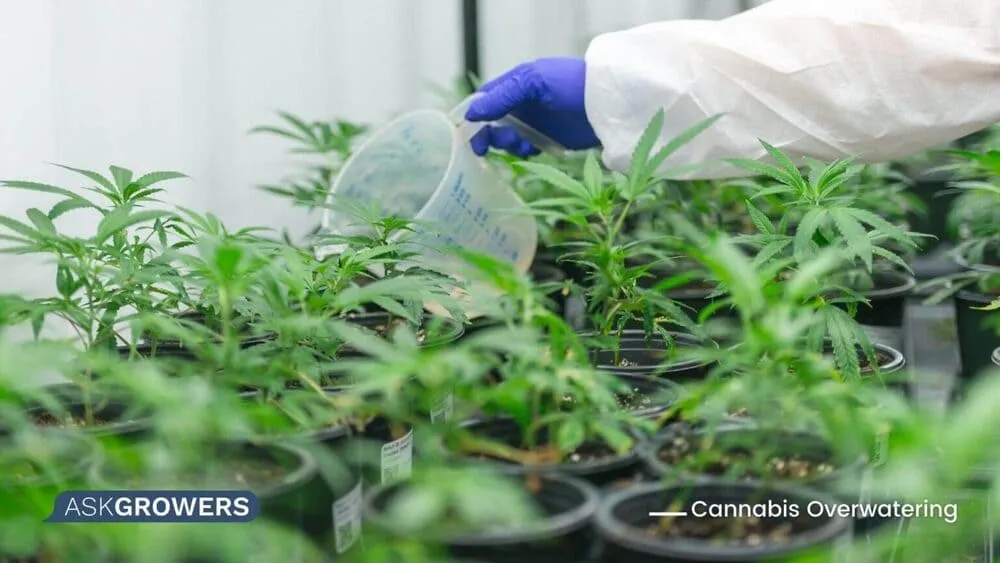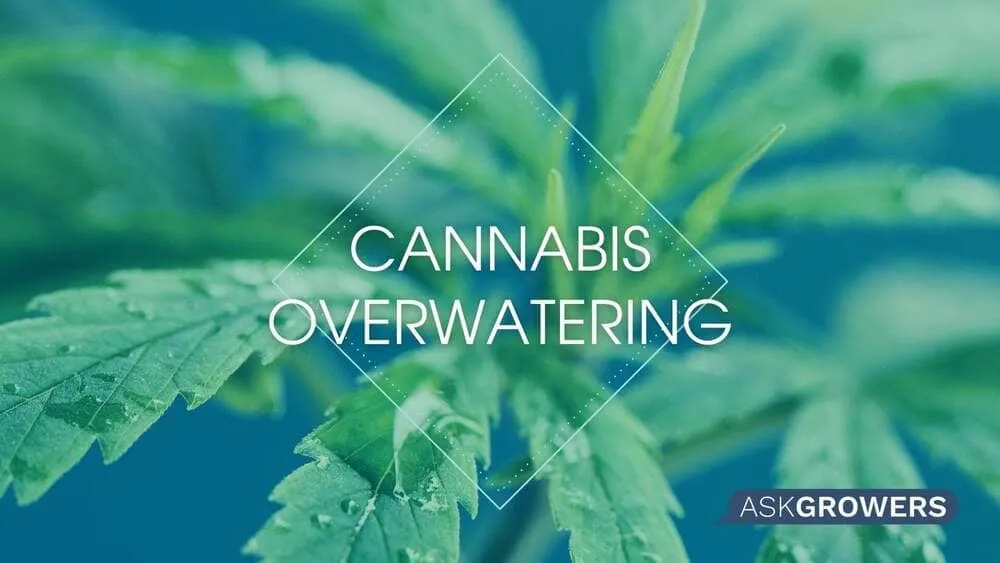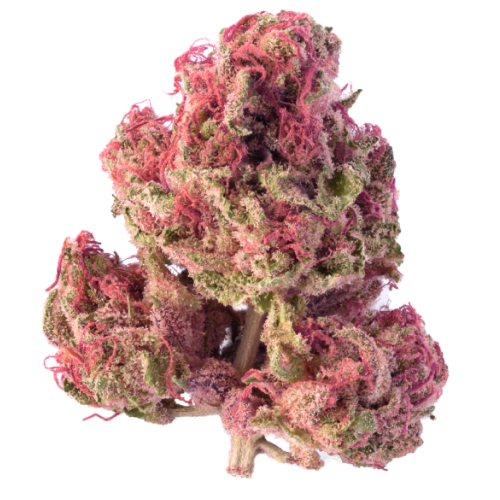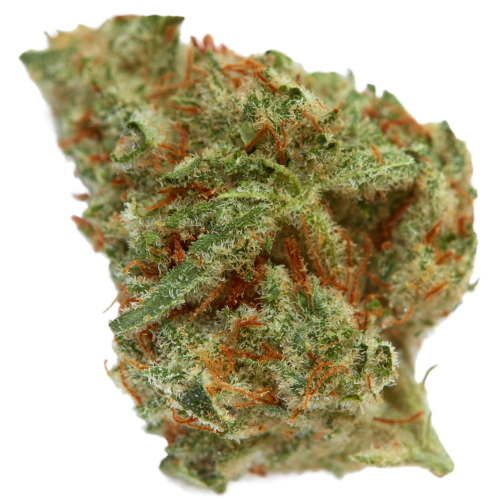Every weed farmer knows the perils of incorrect watering. What can be easier than watering plants? Though, overwatering ranks among the most common mistakes among beginning gardeners. Even experienced cultivators can make mistakes and have this happen to them. Also, improper irrigation is the most typical reason for cannabis growth troubles. Learn how to cope with this issue to avoid it in the future and get satisfactory yields.
Signs of Overwatering Marijuana Plants
Overwatering is an easy mistake for novice growers because they are worried that their weed shrubs need regular doses of water. To decide if your weed receives too much liquid, inspect your marijuana first. The overall plant appearance is the pointer to this problem.
These are the symptoms that determine your plants are overwatered:
- Curling inward leaves. The leaves remain firm but curl inward from the stem to the leaf, but if only the leaf tip curves inward, it is a sign of nitrogen deficiency.
- Drooping leaves. The leaves look droopy but not thin or wilted. Because of the water weight, they become pretty heavy.
- Yellowing/bleaching of the leaves. Aside from water, the plant roots need oxygen to breathe. The roots suffocate due to a lack of air and malfunction of soil aeration. It happens because all air pockets in the soil are filled with water.
- Slow growth. Plants need oxygen to metabolize nutrients. Overwatering deprives cannabis of sufficient air supply and results in stunted growth.
- Mildew and mold. Overwatering creates a damp environment, which is favorable for the fungus spread. Typically, these diseases appear in humid conditions.

Still, some gardeners may be confused about overwatering vs underwatering weed symptoms. The leaves are thin in underwatered plants, and their tips curl. They are drooping and hanging down, not as firm as in overwatered cannabis. Plants can develop dry and brown leaf edges. Give them a quick watering, and they will be standing right back up.
Causes of Overwatering
Some farmers grow weed in water using hydroponics techniques. So, it is not water that damages your cannabis plants but a lack of proper oxygen. Have a closer look at your shrubs and analyze your growing practices to determine that your marijuana can be overwatered:
- A big plant sits in a small pot. This plant drinks water quickly and causes gardeners to water it repeatedly.
- A small plant sits in a big pot. Young plants cannot absorb all water, and the excess liquid remains in the soil and doesn’t dry.
- Poor or no drainage is provided. The lack of drainage holes in a pot can lead to overwatering and the roots struggling for air.
- Watering happens too often or much at one time.
- The light in the growth plantation is too weak.
- The air temperature is too hot (85°F/30°C) or too cold (70°F/21°C) for growth.
Each plant requires a different amount of water. It depends on the growth stage, plant’s size, type of soil, and atmosphere.
How to Water Marijuana Plants Properly
Try to be cautious when watering marijuana and carefully examine your plants and soil. Here are some tips you can use:
- The time to water weed is when the growing medium in the pot is dry 1 inch (2.5 cm) deep. Check it with your index finger.
- Water your plants until you see that 20% extra liquid drain out of the pot bottom.
- Improve drainage if the soil in the pot remains damp for a long time.
- The optimal schedule for watering marijuana is once in 2-3 days.
Some cultivators use a simple method to determine when to water plants by lifting a pot. If it feels light, it means all water has been used.
Measures to Prevent Overwatering
Make the following arrangements before growing your cannabis if you are a novice, and keep in mind some rules if you are an actual grower. These items are essential to observe:
- Pots. Choose an appropriate pot size for your plant and start with a small container for a tiny seedling. Check that there are drainage holes in the pot or drill more holes, if necessary.
- Soil. Choose appropriate growing material. Clay-based soil is known to absorb and retain a lot of water. Experts recommend mixing in perlite or other natural materials that stimulate drainage and improve an oxygen supply. Use an inch of sand on the pot bottom and coconut coir. Research suggests that growing cannabis in soilless substrates is associated with possible pathogens.
- Diseases. Some plants may develop diseases like root rot that prevent oxygen supply. Examine if your marijuana bushes have any issues.
- Watering schedule. Note that seedlings require less water and should be watered less frequently, while adult cannabis needs more liquid. In winter, weed needs less water. On hot summer days, it requires more liquid because evaporation increases.
- Water characteristics. As studies prove, water sources are also important. If you use hard city water, make a test for pH (the preferable levels between 6 and 7) and install a proper filtration system. The water should be at room temperature (62-72°F/17-22°C) because extreme temperatures may stress plants.

Vigilant farmers prefer monitoring the humidity level with a moisture meter.
Cannabis Overwatering Recovery
After noticing that your cannabis is overwatered, your goal is to rescue the plant and make it healthy. Can weed plants recover from overwatering? Indeed, there are many ways to get out of this mess:
- Stop watering, let the soil dry for several days, and then resume irrigation.
- Give it more time between regular watering periods.
- Check the drainage system in the pots. If soil remains damp for more than 4-5 days, improve the drainage.
- Place newspaper or jute bags under drainage holes to soak up excess liquid.
- Drill more drain holes in pots.
- Make air holes in the soil with chopsticks.
- Provide your weed with extra light.
- Use fans to lower the humidity level.
- Increase the air temperature in the growth room by 1-2 degrees.
Be careful when planting tiny seedlings in big pots and large plants in small containers.
TOP cannabis seeds for growers
Conclusion
Overwatering can happen in any growing method, including container and in-ground gardening. If a problem of a damp growth medium is left unsolved, it may lead to severe consequences, resulting in disease outbreaks like fungal growth or root damage and attracting pests. If you suspect this issue, look for overwatering weed plant signs that will help you know it for sure. Note that an underwatered plant is an easier problem to solve than its opposite.




